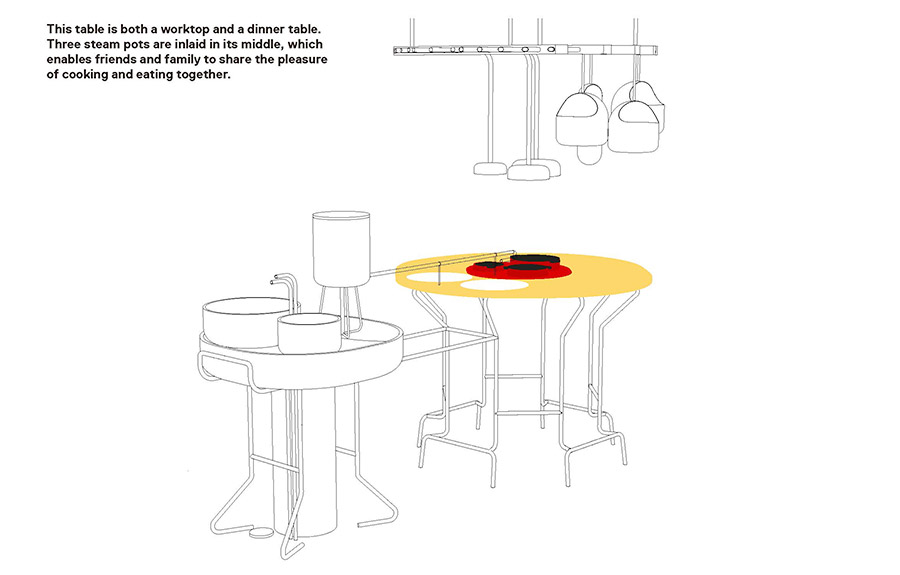2015 - New Star Award
Saint-Etienne, France
La Cuisine is a Manifesto project. It embodies the idea of social change required by our common future. It’s a hypothesis about the organization of a daily routine in a sustainable and responsible way. It’s about the manner in which an individual can measure the consequences of his own activity on a bigger scale.

A designer, by dealing with daily objects, can enhance the transformation of a users’ behaviour in such a way that it reduces the harmful impact it has on the environment. A kitchen is not only the place where we eat - for our pleasure and in order to satisfy our vital needs - but it is first and foremost the witness of our relationship with others and the world around us. Our daily routine has a substantial impact on an ecological and social level. By encouraging intensive and outsourced farming, consumers deny the link between health problems and junk food. Within households, food waste is due to the overloading of the fridge with more perishable foods that one can eat before the date expires. Overconsumption of tap water whilst cooking and cleaning is typical, although not essential.

Today, the consequences of unhealthy eating behaviours, the food crisis and the ecological disruption imply the necessity of changes. Seeking for a good quality foods and products, consumers turn to local farmers in order to supply the sustainable agriculture and local food self-sufficiency. But what about the kitchen where consumers hoard and transform the food? The concept of La Cuisine highlights the importance of minimizing the waste of precious and essential resources like water and food. Water can be reused for other purposes in order to decrease a households’ ecological footprint. As for food, the storage space constrains the person to foresee the appropriate amount of food and its quality. At the same time, this project addresses the issue of the sharing potential of the kitchen.
La Cuisine is composed of two linked blocks: the big sink and the table with a hanging structure designed to receive wicker baskets and cooker hoods. On the big sink there are two smaller sinks, both of which have two water outflows. The first of the two leads to an inflatable tank, under the big sink, which changes volume according to the amount of water which is thrown away.

This way, the user is directly informed of his consumption. The water from the second outflow is filtered inside the big sink, then pumped by hand in the other tank which supplies a tiny garden and steam pots. The tiny garden fits self-watering pots for plants made from naturally porous unglazed earthenware, the level of water outside the pots is self-regulated by capillary action. The food which cannot be piled in too vast quantities at a time due to limited space, is kept depending on its fragility either in hanged wicker baskets above the table, or on cooled plates covered with a ceramic dome.
One can meet with others to share the pleasure of cooking and eating around the table, in the middle of which there are three steam pots. Steam, collected by cooker hoods, becomes liquid again inside small containers on the other side of hood pipes.
